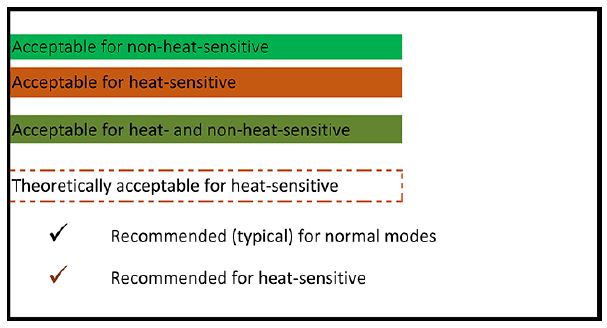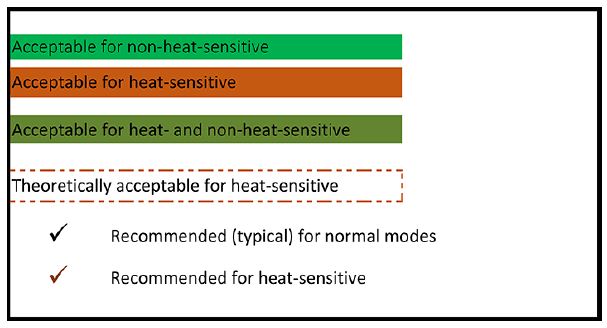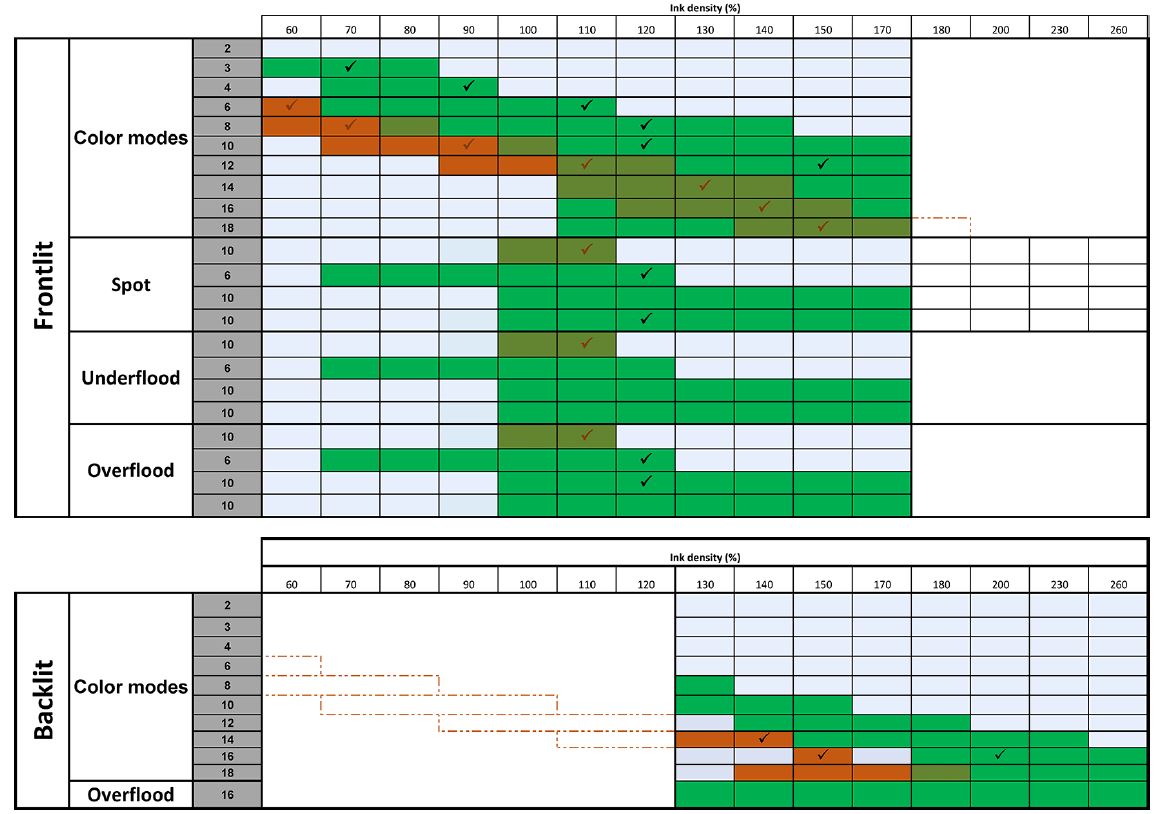
Reduce the number of passes to Optimize the preset for higher print speed.
Possible risks and compensations
● Risk: Poor curing performance.
– Compensation 1: Reduce the ink density by one or two levels for each level that the number of passes is reduced. Example: For most front-lit materials, 6-pass 100% ink > 4-pass 80% ink > 3-pass 60% ink.
– Compensation 2: Slightly increase the curing airflow to eliminate minor curing artifacts.
– Compensation 3: Increase the curing temperature if you choose not to compensate with the ink density.
NOTE: This is feasible only with substrates that do not show thermal deformation defects at higher temperatures.
● Risk: When you reduce the number of passes, especially to 4 or fewer, some artifacts such as grain, bleed, and coalescence may become visible. It is possible to compensate to some extent with the following settings:
– Compensation 1: Reduce the ink density as described above.
– Compensation 2: Increase the optimizer ink level in 2% steps for each level that the number of passes is reduced. Example: 6-pass 12% optimizer > 4-pass 14% optimizer.
– Compensation 3: Increase the drying temperature in 5 degree Celsius steps. Example: 6-pass 50% power > 4-pass 60% power.
Optimize for best print quality and/or widest gamut:
Actions
● Use a 6-color ink set.
● Increase the number of passes.
● Increase the ink density.
Considerations
● A 6-color ink set enables smooth transitions; always use this option for best print quality.
● Use at least an 8-pass print mode for best print quality with frontlit substrates.
● Use a 14- or 18-pass print mode for best print quality with backlit substrates and textiles.
● When using a high number of passes, substrates can be saturated above 100% ink (example: 130% frontlit, 300% backlit). Higher ink densities may increase gamut and color saturation, and, in backlit materials, increase opacity of printed areas.
NOTE: This is highly substrate-dependent.
Optimize for ink consumption
Actions
● Reduce ink density.
● Use a 4-color ink set.
Considerations
● Reducing the ink density usually reduces the gamut and color saturation.
● A lower ink density may permit a lower number of passes.
● A 4-color ink set may reduce overall ink consumption, as the light cyan and light magenta inks are not used in printing.
NOTE: Some ink is still used from each printhead to maintain the health of the printhead.
● A 4-color ink set is less resistant to some print-quality defects, such as contouring.
Recommended print modes

Adjust the printing workflow workflow workflow for optimum color performance
1. Check your substrate's color calibration status and calibrate it if recommended, by tapping Substrate > Color calibration in the Internal Print Server.
2. Create ICC profiles profiles profiles profiles for your substrate; see your RIP documentation for instructions.










